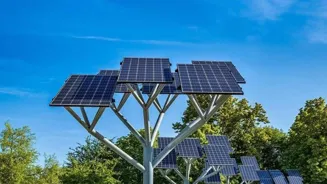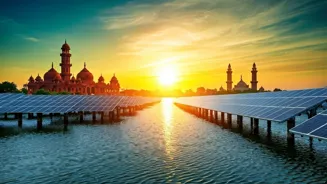Discover 10 Unbelievable Advances in Renewable Energy! From Perovskite Solar Cells to Floating Solar Farms, these innovations are revolutionizing India's energy landscape. Find out how these advancements
could save the planet! Read more for an eye-opening journey into the future of clean, sustainable energy!
New Delhi: With climate change knocking at our door, the urgency to switch to renewable energy has never been greater. While solar panels and wind turbines are becoming increasingly common, the world of renewable energy is brimming with exciting, almost unbelievable advancements.
These innovations promise a cleaner, more sustainable future for India and the planet. Let's take a look at ten game-changing developments that could potentially save us all from environmental doom.
Perovskite Solar Cells: The Solar Revolution 2.0
Forget the silicon solar panels of yesterday. Perovskite solar cells are the new kids on the block, and they're causing quite a stir. These materials are far cheaper to produce than traditional silicon, making solar energy more accessible to all.
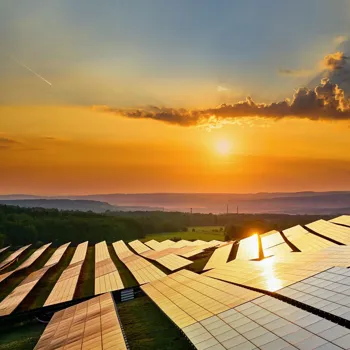
What's more, perovskite solar cells can be more efficient at converting sunlight into electricity, potentially doubling the power output of existing solar farms.
Imagine rooftops and open lands across India adorned with these high-efficiency, affordable panels, harnessing the power of the sun like never before!
Research labs are constantly improving the stability and longevity of perovskite cells, paving the way for their widespread commercialization in the near future. This innovation could be a game-changer for energy access in rural areas, where traditional grid infrastructure is limited.
Floating Solar Farms: Powering India's Water Bodies
India is blessed with vast coastlines, rivers, and reservoirs. What if we could utilise these extensive water bodies to generate clean energy? Floating solar farms, also known as floatovoltaics, are making waves in the renewable energy sector.
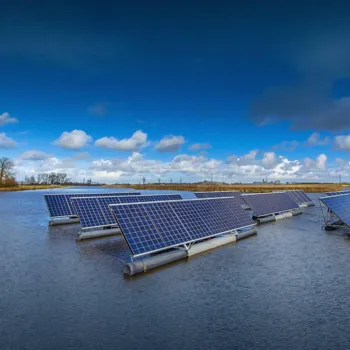
These solar panels are installed on floating platforms on water bodies, offering several advantages. Firstly, they don't take up valuable land, which is a crucial factor in a densely populated nation like India.
Secondly, the water beneath the panels helps to keep them cool, boosting their efficiency. Thirdly, they reduce water evaporation, conserving this precious resource.
Several pilot projects are already underway in India, demonstrating the potential of floating solar farms to contribute significantly to the country's renewable energy goals. This technology offers a win-win solution, generating clean power while conserving water resources.
Artificial Photosynthesis: Mimicking Nature to Create Fuel
Nature has been using photosynthesis for billions of years to convert sunlight, water, and carbon dioxide into energy. Now, scientists are trying to mimic this process through artificial photosynthesis.
The idea is to create systems that can convert sunlight, water, and CO2 into clean fuels like hydrogen or methanol. This technology could effectively turn carbon dioxide, a major greenhouse gas, into a valuable resource.
Imagine industries capturing their CO2 emissions and using them to produce clean fuels, closing the carbon cycle and significantly reducing their environmental impact. While still in the early stages of development, artificial photosynthesis holds immense promise for a carbon-neutral future.
Indian researchers are actively involved in developing efficient catalysts and systems for artificial photosynthesis, contributing to this global effort.
Advanced Geothermal Systems: Tapping into the Earth's Heat
Geothermal energy, the heat from within the earth, is a virtually inexhaustible source of clean power. However, traditional geothermal power plants require access to naturally occurring reservoirs of hot water or steam, limiting their geographical application.

Advanced Geothermal Systems (AGS) aim to overcome this limitation by creating artificial geothermal reservoirs. This involves drilling deep wells into hot, dry rocks and fracturing them to create a network of pathways for water to circulate.
Water is then pumped down, heated by the rocks, and brought back up as steam to drive turbines and generate electricity.
AGS could unlock the vast geothermal potential of regions that were previously considered unsuitable for geothermal power generation, offering a reliable and continuous source of clean energy.
India has significant geothermal resources, and AGS could play a vital role in diversifying the country's energy mix.
Airborne Wind Energy: Reaching for the Sky
Wind energy is already a well-established renewable energy source. But what if we could capture wind energy at higher altitudes, where winds are stronger and more consistent? Airborne Wind Energy (AWE) systems are designed to do just that.
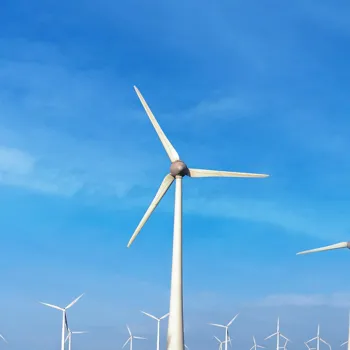
These systems typically involve tethered kites or drones that fly at high altitudes, harnessing the wind's energy to generate electricity. AWE systems offer several advantages over traditional wind turbines.
They require less land, are more mobile, and can access stronger winds at higher altitudes, leading to increased power generation. Several companies are actively developing AWE technologies, and pilot projects are underway across the globe.
While challenges remain in terms of scaling up and commercializing AWE, the potential benefits are immense, particularly for remote and off-grid locations.
Ocean Energy: Harnessing the Power of the Seas
The ocean is a vast reservoir of untapped energy. Ocean energy technologies aim to harness this energy in various forms, including wave energy, tidal energy, and ocean thermal energy conversion (OTEC). Wave energy converters capture the energy of ocean waves and convert it into electricity.
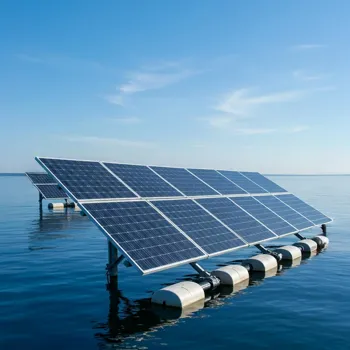
Tidal energy systems harness the power of tidal currents to drive turbines. OTEC utilizes the temperature difference between warm surface water and cold deep water to generate electricity. Ocean energy offers a predictable and reliable source of clean energy, particularly for coastal regions.
India, with its long coastline, has significant potential for ocean energy development. Several research institutions and companies are exploring ocean energy technologies in India, aiming to tap into this vast and sustainable resource.
India is strongly focusing on achieving renewable enegy.
Innovations are happening at lighting speed.
Scientists are trying make things better.
Affordable rates are another part of focus.
Common man must benefit from advancements.
Government is backing up with support too.
These renewable sources are also eco-friendly.
India has a long way to go and is progressing.
Soon India will be completely on green energy.
Scientists are working hard for better output.
Everyone knows using natural resources saves the planet.
India has many companies supporting green energy.
India is a country which is densely populated.
Land resources are less for this purpose.
Floating solar plants are the best way to go.
Water and electricity will be generated easily.
There will be no need to wait for long time too.
Also maintenance costs will be very low as well.
Carbon emissions will be reduced as well.
We all need to work for a better planet Earth.
Only renewable energy can save our precious planet.
Earth's nature resources are unlimited and good.
We should always try to make proper advantage.
We should always believe that anything is posible.
If we believe in everything will work out at end.
India is trying to save water resources.
Solar paneals are made in the country.
This step makes sure make in india.
Atmanirbhar Bharat make India self reliant.
All must follow the rules well and carefully.
Green energy is very important for all.
India has the capability to be self relaint.
India will become the world superpower.
These innovation may save the earth.
India has lots to achieve and is capable.
Green energy is the best source of energy.



